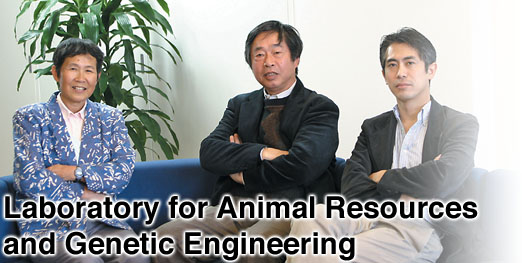


   |

The study of model organisms and systems is integral to biological research. Such systems provide scientists with the means to search for broadly shared mechanisms underlying developmental and regenerative processes across species, and conversely to identify those traits that earn each species its unique branch on the phylogenetic tree. The mouse is one of the most important and widely used model organisms in science today, prized for its amenability to genetic manipulation, its high level of homology with humans, and the trove of data regarding its physiology, genetics and development that has accumulated over nearly one century of intensive scientific research.
The Laboratory for Animal Resources and Genetic Engineering (LARGE) provides an important suite of services related to the generation of experimental mice to labs within the CDB and around Japan. In its role as a CDB support laboratory, the LARGE team produces transgenic and knockout mouse models to the specifications of scientists working in a wide range of genetic, embryological and biomedical research projects, maintaining the highest quality standards and rapid turnaround to ensure fast and easy access to researchers working within the Center and throughout the country. In addition to these core functions, the LARGE staff provides a number of other services, such as cloning by nuclear transfer and cryopreservation of mouse zygotes and sperm. The lab also performs a number of maintenance and logistical functions, such as the specific pathogen free (SPF) housing, cleaning, processing and distribution of animals.
The LARGE team continues to expand its services and initiate new programs, notably the generation of target vectors from sequence information alone, and the independent production of novel genetically-modified constructs, a drive that generates on the order of 40-50 new mutant strains per year. Such strains serve as research platforms with the potential to provide new insights into a range of important research problems, from the developmental mechanisms of organ development to the genetic bases of human disease. The lab will also function as part of Japan's system of Mouse Embryo Banks, with a special emphasis on producing, storing and cataloging embryos for use in developmental biology and regenerative medical research.